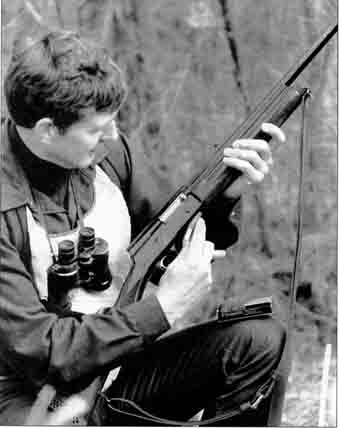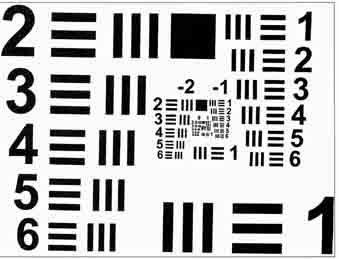Home
Camera, lens & related electronics gear
“There’s no magic in good glass, only obedient light”
Glass types
IT’S EASY TO think that glass is glass. But that’s like saying metal
is metal or that blood is all the same.
Actually, there are many kinds
of glass, and optical glass is only one of several types used in optics.
Field instruments may also contain laser glass, color filter glass and
technical glass. To complicate things further, many optical materials
aren’t glass at all. These days they include ceramics and optical plastics,
U and IR crystals, fused quartz and even metals.
Optical glass is worth a word or two here because it is an important component of binoculars, riflescopes and spotting scopes.
In its most basic form, glass is a melt of silicon dioxide (quartz)
with calcium and certain alkali. The melt is cooled so as to solidify
without crystallizing.
Optical glass is formulated to affect incident
light in specific ways. It can be fashioned into lenses and prisms that
not only transmit light, but bend it and focus it.
The optical glass we know probably began life around 1884, in the Glastechnisches
Lab in Jena, Austria. That facility later became the Schott Glaswerke.
Now with sales men and subsidiaries in more than 100 countries, Schott
continues to supply much of the world’s superior optical glass.
Schott
Glass Technologies in Duryea, Pa., is the U.S. branch. Though many prestigious
optics firms use Schott glass, they also have backup suppliers. The glass
technology used in Germany is available in Japan, and as long as the
glass meets user specifications, its origin matters not. Besides, steps
in the manufacture of lenses and prisms are as important to the product
as the raw material from which they are made.

Fig so-2-19-0 Optics help hunters find game and aim accurately.
The two definitive properties of optical glass are its refractive index (n) and its index of dispersion (v). The refractive index shows how the glass moves light relative to the unobstructed passage of light through air, which has an index of 1. The dispersion value, often called the Abbe number after optical pioneer Ernst Abbe, defines how the glass scatters light into its various wavelengths. Both measures vary with the wavelength of incident light, so for purposes of specification, a standard wavelength of 587.56nm applies. It is commonly noted by the subscript, d; Hence, nd, vd. A measure called principal dispersion shows how much greater the refractive effect is on short (blue) wavelengths than on long (red) ones.
Glass types with nd greater than 1.60 and vd greater than 50, plus those with nd less than 1.60 and vd greater than 55, are called crown glass. The letter designation K stands for Kron — German for Crown. A common crown glass in sports optics is BK 7, the B meaning borosilicate. Another popular crown glass is BaK 4, a barium-silicon compound. While BaK 4 is usually more costly than BK 7, you won’t see much difference looking through binoculars.
“They’re both prism glasses,” said Bausch & Lomb optical engineer Bill Perkins. “You can tell prism type by looking into the objective end of a porro-prism bin ocular. If the exit pupil appears round, it’s BaK 4; if it looks square, it’s BK 7. The flat sides of the exit pupil are caused by shading, a function of the 90-degree turn of light between two 45-degree prisms.”
Perkins said that although BaK 4 prisms are a recognized standard now, the most important attributes of a high-quality binocular are sound design, close tolerances, proper choice of glass for each component, coatings that boost light transmission, and mechanical lens settings that ensure ruggedness.

Fig 2-20-0 A Swarovski binocular, rangefinder and scope teamed up with
a Dakota rifle on this pronghorn buck.

Fig 2-20-1 Glossing in big country calls for a powerful binocular; but
also a steady position.
“You hear a lot about BaK 4 glass now, but it’s not new,” he said.
“Anyone building binoculars can use it. It seems to me the hype is mainly a marketing ploy. Binoculars are lots better than they used to be — better coatings, smaller housings, tighter tolerances — but not much different in design. Spouting technical terms is one way to give products a fresh image.”
The other main type of optical glass is flint. A common flint glass, SF 2, gets its moniker from “Schwerflint” — German for heavy or dense flint. The English name, FD 2. Glass designations include the index of refraction and the Abbe value in a 6-figure code. For example, BK 7 glass with a refractive index of 1.5172 and an Abbe of 64.19 is listed as BK 7—517642.
According to Dr. Walter Mergen of Zeiss, there should be several types of glass in a binocular or a scope. “Not to save cost,” he said, “but to match each type of glass with a specific need.”
The fact that some glass is more expensive than other glass is peripheral. In fact, you could diminish the performance of a scope or binocular if you chose only the most expensive glass for its optical system.
Mergen said that flint glass is typically heavier and more brittle than crown glass, and ill suited to placement on the exposed ends of a lens system. He also said that the differences in refractive index and Abbe number that distinguish crown from flint glass are necessary in an optical system.
“A collecting lens of crown glass manages light in such a way that flint glass — often as the second half of a doublet, or achromat — must correct for aberrations,” he said. “But the flint glass won’t serve in place of the crown glass. You need both.”
For the most part, crown and flint glass share the same chemical constituents, but flint glass also contains lead oxide. Dense flint can have as much as 70 percent lead oxide. The composition of glass directly affects its weight, as well as its optical properties. Some other characteristics of glass that are important to optical engineers: elasticity, thermal expansion, thermal conductivity, stain resistance, moisture resistance, and resistance to acids and alkaline solutions.
Simple glass is not easily dam aged by chemicals, except hydrofluoric acid. However, the polished surfaces of optical glass are quite vulnerable. Even water vapor can cause problems. Moisture condensing on a lens can draw alkali ions from the glass. These ions form an alkaline solution in the water drop lets, which can erode the silica gel layer of the polished lens surface. The optical industry calls the result of water vapor attack “dimming.” When the water evaporates, it leaves a film of silicon ions and alkali on the glass. You can’t easily remove that film.
Laboratories test glass for resistance to water and to water vapor separately. Staining follows expo sure to slightly acidic water — mainly, water that has absorbed carbon dioxide or sulfer dioxide. Deterioration of a glass surface changes the refractive index there, producing the visible colors in this thin layer of damage. In water tests, glass is graded according to the time in standard acetate solution (pH 4.6) required to produce visible discoloration. The higher the number, the more care must be taken to protect the glass during manufacture and use. Glass in stain class 3 will show staining after only one hour in the test solution. Glass in stain class 0 will show no color after 100 hours of exposure. Tests for acid and alkaline resistance are con ducted in similar fashion.

Fig 2-21-0The more time you spend looking through good glass, the
more you’ll see.

Fig 2-21-1Looking through glass is sometimes safer than getting
a close look without magnification.
Even mild chemicals can dissolve from the glass surface those components included to produce certain optical qualities. A permanent stain results, much in the manner that acidic water produces a stain. A good rule to remember: Gun oils and solvents can damage glass. Keep them off scope and binocular lenses! And don’t touch that glass. There are acids on your hands and acids in your saliva.
Most of the physical properties of glass affect the manufacture of a scope or a binocular more than they do its use afield. Specific gravity tells you how many grams a cubic centimeter of glass will weigh. In optical glass, specific gravity varies from about 2.25 to 6.25 g/cm The popular BK 7 glass used in binoculars is quite light at 2.51 g/cm In high-quality optics, weight is a con sequence of glass choice, but it does not determine which glass will be used. Optical performance matters far more than overall weight.
Glass hardness is measured by pushing a diamond point into the glass under a specified weight. Microscopic measurement of the indentation gives you the “Knoop hardness” expressed in kiloponds per square millimeter. (The kilopond is a measure of force.) Hardness values range from about 250 kp/mm to 700 kp/mm While this test tells how the glass resists penetration, it does not show response to abrasion. A hard glass may even abrade more readily than a softer glass. Tests to measure abrasion put a grinder to the glass sample under controlled conditions for a specified time period. The amount of material removed determines abrasion rating. The higher the number, the less resistant the glass. BK 7 has been designated as a standard for the abrasion tests. It has a rating of 100. A soft FK glass (rating: 400) will lose the same amount of material to the grinder in a quarter of the time, or four times the amount over the designated period.
When you pay a lot of money for a scope or binocular, you almost always get good glass. You may also be getting more glass. Zeiss National Sales Manager Gary Reed said that his company’s roof-prism binoculars feature bigger prisms than most, offering 6 percent more light transmission. Leupold emphasizes in its scope catalog that its lenses work for you all the way to the rim. You’re paying for the glass coatings too. Fully multi- coated lenses (with several microscopically thin washes on every air- to-glass surface) transmit light more efficiently and offer a clearer view. Phase-corrected coatings, such as those on Zeiss roof-prism binoculars, and ED (extra-low dispersion) glass on Nikon spotting scopes, may or may not be notice able at first glance. You’ll have to make side-by-side comparisons in natural light to detect any differences between top-quality optics without special coatings, and those with them.
Buying a scope or binocular because the catalog lists BaK 4 glass as a component is like buying stock in a firm because it has an office in your hometown. The design of the instrument, like management of the company, will determine the value of your investment. Glass is a raw material. What it becomes after the grinding and polishing, and how it is coated and installed, matter as much as the melt.
Plastic lenses, optical voodoo

Fig 2-22-0 Optics bring us close to animals that are hard to approach,
like this Montana pronghorn.
When I was a child, I thought glass was glass. Then I learned that the eyeglasses grownups wore each delivered a slightly different distorted view when I looked through them. Grownups couldn’t trade glasses like we used to trade plastic eyewear for different parts in vacation Bible school skits, which we performed at the behest of local church matrons who withheld graham crackers and Kool-Aid until Gil Donalds stopped running around long enough to recite one miserable line.
Had Billy not broken my plastic glasses by sitting on them at a Presbyterian potluck, I might still have them. Bill Cross of Bausch & Lomb assured me that I’m not missing anything.
“But new plastic lenses are not at all like what you had,” he said.
Plastic is now serious lens material. “Plastic will do a lot of what glass can do,” he said, “and it’s lighter in weight.” Of course, it isn’t perfect. “Plastic is softer than glass so it is unfit for outside lens surfaces that might get scratched. Plastic also has a narrow refractive index range...”
“Wait a minute,” I said. “Better remind me about that.”
“Light changes speed when it goes from one medium to another,” Cross said. “Think of the index of refraction as the ratio of those speeds, when light travels from air to glass or air to plastic. It is also the sine of the angle formed between the incident ray and the refracted or bent ray that results from light passing through a lens.”
Because of this narrow range, plastic cannot be used to make an achromatic or color-corrected lens. Normal achromatic lenses are doublets — two lenses cemented together. Flint glass and crown glass normally comprise this pairing.
“So if the plastic isn’t as durable and scatters colors, what good is it?”
Cross explained that plastic is much less expensive than glass and can be molded into aspherical shapes. “Meaning that the lens surface needn’t be spherical or a segment of a circle in cross-section. You see, a lens whose center radius differs from the radius at the edge can produce sharper resolution, a slightly wider field of view and flatter images at the fringe.” He said that Simmons installs one in the erector tubes of some rifle- scopes and that it seems to work. “The image appears flat and bright, and the field is slightly bigger than normal.”
Because the Simmons application is internal, the plastic lens surface is protected. Color correction is done by other elements.
“Plastic lenses appeared in cameras first,” Cross noted. “Now they’re not only in throw-away models but in detachable lenses for very expensive SLRs. The unit can be made lighter and smaller, with no apparent sacrifice in optical quality — at least, none most people would notice. Incidentally, plastic can even be used as a coating on glass lenses.”
While I had him on the phone, I decided Cross was just the man to ask about field of view. A wide field is what everybody wants, but what were the trade-offs?

Fig so-2-23-0.jpg High magnification and high resolution bring out
details that you could not see with the naked eye.
“You can get more field by changing magnification and eye relief,” Cross said. “Those three variables comprise what designers call the optical triangle. To get the most field or magnification or eye relief, you have to compromise at one of the other two legs of the triangle, maybe both. For example, we engineered our 2-fix B&L handgun scope so it offered a wide field of view at all power settings. But we found the eye relief shrank to only 12 inches at the high end. That was unacceptable — both from the standpoint of aiming comfort and safety. A .454 Casull could plant its hammer in your head from that distance. So we sacrificed a bit of field to increase eye relief to 20 inches at all the settings. That made sense to me, partly because I’ve never thought a wide field of view essential in an aiming device.”
Neither have I. Field matters in binoculars, which are used mainly to find and examine wildlife at a distance. Shooting game requires concentration on the reticle, on the one spot you want to put the bullet. Save for short, quick shooting in brush, where extra field allows faster aim because it enables you to find the target sooner, wide-angle rifle- scopes don’t seem worth compromises in eye relief or magnification. Besides, a scope suitable for fast action in the thickets will have low power anyway, and, naturally, a broad field of view.
Cross kindly offered to answer more questions, but there is no sense in exposing all your ignorance at once, so I hung up and then called Forrest Babcock.
Babcock, a lens designer at Leupold and Stevens, confirmed what Cross had told me about aspherical lenses. “Mostly they’re used on eyepieces, to correct for field curvature,” he added. “An aspherical objective lens would be very costly.”
Babcock said that the objective lens accounts for roughly a quarter of the cost of a scope and that most objectives are...
“Doublets,” I said, as if I’d known that since the day Gill Donalds had shared his tuna sandwich with May Berenson at the third-grade picnic. May.... “Oh, uh, yes, I’m still here. What is ED glass, anyway?”
ED glass, explained Forrest, is extra-low-dispersion glass, a type that has been used for some time in expensive telescopes. It is normally added to a doublet to form a triplet. Its purpose is to give additional color correction in the secondary spectrum. It compensates for over lap in the angles of light rays brought together by the second element in an achromatic lens.

Fig so-2-24-0 Everywhere you go, you’ll see more with high-quality optics.

Fig so-2-25-0 Even in tight cover where shotguns and iron sights
make sense, binoculars help you spot game.
“Is color correction substandard without ED glass?” I asked.
“Well, not to the average eye.” Babcock meant that my eye was probably about as average as they come but was kind enough not to say so. “For people who need the sharpest true-color pictures — bird watchers, for example — an ED element makes sense. It is, of course, expensive.”
Of course. “How much does it add to the price of a scope?”
“That depends on where you put it,” Babcock said. “The objective lens determines image quality, for the most part, so any ED glass really belongs up front. That means a bigger lens than if you could use it to good effect inside. A blank of ED glass costs between 170 and 200 times what normal crown or flint glass costs, so a really big objective bell will make the scope much more expensive when you install ED glass.” He excused himself to page through an optics catalog. A few seconds later he was back on. “This supplier lists a 6-inch blank of ED for five thousand bucks.”
“So, what exactly does this glass do that’s worth that kind of money?”
It was the wrong question to ask halfway through my last sheet of notepaper. Babcock reminded me that the white light coming into a scope’s objective lens is actually a bunch of colors. The lens, in prism- like fashion, separates them. “In a lens that is not color corrected, the red and blue waves remain apart, giving your image fuzzy edges and perhaps a halo. Achromatic doublets gather the primary spectrum back into its white bundle. That’s because the crown glass — say it’s BK-7 — has a refractive index of 1.57. The flint glass backing it — let’s use SF-6 — has a refractive index of 1.8. Dispersive powers also differ: 65 for the crown and 25 for the flint...”
“Wait,” I said, now on the back of my second envelope and hunting for the church bulletin.
Babcock sighed. “The action of light as it passes through a lens depends on the type of glass plus its thickness, surface shape and index of refraction. JR is roughly 1.5 in optical glass and 1.3 in water. Any way, color activity is also a function of a lens’s dispersive power. The flint and crown glass in a doublet complement each other in this regard. ED glass merely helps them by sharpening the final picture.”

Fig so-2-26-0 This roof-prism Doctor Optic binocular has both the main
focus dial and diopter ring in the middle.

Fig so-2-26-1 Very big binoculars can be too bulky and heavy. Very small
ones rob you of light at dawn and dusk.

Fig so-2-26-2 Stabilizing devices and compasses add substantially to
a binocular’s weight and bulk.
He went on to explain that ED is not only expensive but hard to work with because it is soft. “You have to apply coatings right after grinding, and you don’t want to use it on the outside of a scope where it might get banged up.”
Kind of like plastic.
“Does Leupold use ED glass?”
“Not yet.”
“Why not?”
“It doesn’t do a helluva lot of good. I mean, it adds a level of performance that most hunters won’t even notice, at a price even the serious among them won’t pay. At Leupold, we think mechanical integrity is a better place to put our money. Our optics get rave reviews without ED.”
He’d mentioned F values, and I asked him if the F values in scopes were like those in cameras.
“Exactly. F is a ratio of focal length to lens diameter. It is a measure of the speed with which a lens bends light rays. Fast bending can result in spherical aberration. That’s why when you look through a fisheye camera lens you see lines converging at the edges while the center appears to distend. An F value of 6 is fast for a telescope lens, but not for a riflescope...”
Babcock put me through the church bulletin and onto the wall calendar before he confessed that it was past quitting time there and he had a date with some trout. I told him that was OK and that I’d understood most of this very well before our chat and was just giving him some ink.
I rang off remembering the time I’d been fishing with May Berensen and Gill Donalds had come along with an inner tube and before you could say aspherical plastic they were both in the water, leaving me to gut the bluegills....

Fig so-2-27-0 1951 Air Force optical resolution test images.

Fig so-2-27-1 Resolution chart to pair with 1951 Air Force test images,
yielding resolution in seconds of angle. For use with USAF 1951 Resolving
Power Test Target with a 1524mm EFL Collimator Resolution in seconds
of angle (soa)
Next: What to Know about Binoculars
Prev: All About Light